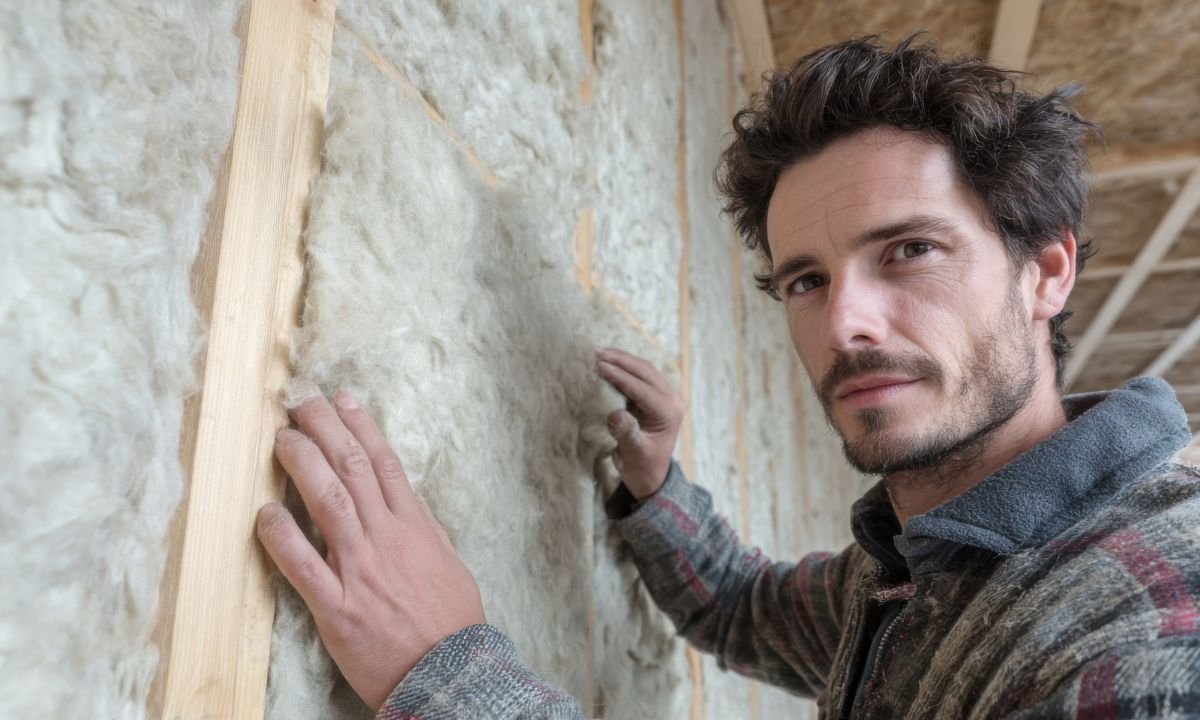You’re sitting in your Valencia apartment. The afternoon sun is baking the terracotta tiles outside, but inside, it’s cool. Serene. From the street, you hear the faint, muffled hum of traffic and the distant chatter of a café, but it’s nothing more than a gentle background whisper. You feel safe. Secure. Unbothered.
Now, rewind the tape. What if that afternoon sun turned your living room into an oven? What if every scooter racing down the street sounded like it was in your kitchen? And what if, heaven forbid, a small electrical fault in a neighbouring property threatened to become a catastrophe?
That comfortable, safe, quiet reality you take for granted? You can thank high-performance insulation for that. And in the heart of Spain’s bustling construction and industrial sectors, one name has been quietly ensuring that reality for years: Acusfoc.
This isn’t just about stuffing fibreglass into a cavity wall. Oh no. We’re talking about a sophisticated, multi-faceted shield that stands between you and the elements, between peace and noise, between safety and disaster. As someone who’s seen the aftermath of both poor insulation and exceptional builds, let me tell you: this is the single most impactful investment you can make in a building’s long-term health. Let’s break down why.
Table of Contents
- The Holy Trinity of Insulation: More Than Just Keeping Warm
- The Inferno Stopper: Demystifying Fireproof Insulation (And Why Spanish Standards Matter)
- The Sound of Silence: The Real Magic of Acoustic Insulation
- The Thermal Regulator: Beating the Spanish Heat Without Breaking the Bank
- Choosing Your Armor: A No-Nonsense Comparison of Insulation Materials
- Acusfoc’s Niche: The Spanish Industrial and Construction Partner You Need
The Holy Trinity of Insulation: More Than Just Keeping Warm
Most folks hear “insulation” and think “winter jumpers for your house.” And while thermal regulation is a huge part of it, that’s a painfully simplistic view. Modern insulation is a triple-threat technology, and honestly, the construction industry doesn’t talk about this integrated approach enough.
Think of your building’s insulation like the immune system of the human body. It’s not one single thing. It’s a complex system working in concert:
- Thermal Insulation: Regulates temperature (the body’s ability to maintain 37ºC).
- Acoustic Insulation: Controls sound (the body filtering out unnecessary noise, allowing you to focus).
- Fireproof Insulation: Provides passive fire protection (the body’s white blood cells, fighting off threats before they spread).
Neglect one, and the entire system is compromised. A building that’s warm but echoes like a cathedral and is a fire risk isn’t a good building. It’s a ticking time bomb with great energy ratings. Acusfoc, from what I’ve observed in the Valencian market, gets this. They specialize in this holistic approach, which is why they’ve become a go-to for professionals who understand that true building efficiency isn’t a single metric.
The Inferno Stopper: Demystifying Fireproof Insulation (And Why Spanish Standards Matter)
Let’s get serious for a moment. The Grenfell Tower tragedy in London was a horrific, global wake-up call. It brutally illustrated how the wrong cladding and insulation can turn a small fire into an unimaginable disaster. In Spain, we have our own strict regulations—the Código Técnico de la Edificación (CTE), specifically its Documento Básico de Seguridad en Caso de Incendio (DB SI).
This isn’t red tape. It’s a lifesaving manual.
Fireproof insulation, or more accurately, fire-resistant insulation, isn’t about being “fireproof.” Nothing truly is. It’s about containment. It’s designed to:
- Resist Ignition: Not provide fuel for the fire.
- Slow Spread: Create a barrier that drastically slows the fire’s progress, creating precious minutes for evacuation.
- Maintain Structural Integrity: Prevent the steel skeleton of a building from softening and collapsing prematurely.
For industrial applications—think factories storing chemicals or warehouses with expensive equipment—this isn’t optional. It’s the bedrock of risk management. Companies like Acusfoc provide materials tested and certified to these rigorous Spanish and European standards (look for Euroclass ratings like A1 or A2-s1,d0 for non-combustibility). Don’t just take a supplier’s word for it; ask for the certification sheets. Your insurance company will thank you, and more importantly, so will everyone who uses the building.
The Sound of Silence: The Real Magic of Acoustic Insulation
Ah, acoustic insulation. My personal favourite. Why? Because its benefits are immediately, tangibly felt. It’s the difference between feeling like you live on a street and near a street.
In a country known for its vibrant, sometimes cacophonous, street life—from the chatter in Valencia’s plazas to the industrial hum in Paterna’s parks—controlling sound is not a luxury. It’s a necessity for mental well-being and property value.
There are two main types of sound you need to combat:
- Airborne Sound: Travels through the air (voices, TV, traffic noise). This is what insulation batts and acoustic panels in cavities handle.
- Impact Sound: Travels through the structure (footsteps on the floor above, a door slamming, vibrations from machinery). This requires decoupling materials like resilient bars and underlays.
A high-quality acoustic insulation product doesn’t just absorb sound; it mass blocks it. It’s like having a heavyweight boxer in your wall, politely but firmly telling sound waves “you shall not pass.” For recording studios, office buildings separating meeting rooms, or apartment blocks, this is pure gold.
The Thermal Regulator: Beating the Spanish Heat Without Breaking the Bank
Let’s be real: Spanish summers are brutal. And Valencian summers? They’re a special kind of humid, coastal oven. The traditional response was to crank the A/C and watch your electricity bill soar like a July thermometer.
That’s a losing battle fought with outdated weapons.
Effective thermal insulation creates a thermal envelope. It keeps the heat out in summer and the warmth in during winter. The goal is to drastically reduce the thermal load on your HVAC systems. We’re not just talking about comfort; we’re talking about hard, cold, cash savings.
The key metric here is Thermal Conductivity, expressed as a lambda value (λ). The lower the number, the better the material insulates. In my experience, many builders still under-specify the thickness of insulation to save a few cents per square meter upfront. It’s a catastrophic false economy. The extra investment in a higher-performing product pays for itself, sometimes in just a few seasons, through slashed energy bills. It’s also, I might add, a huge step towards meeting Spain’s growing demands for energy-efficient building practices.
Choosing Your Armor: A No-Nonsense Comparison of Insulation Materials
Not all insulation is created equal. The right choice depends on your priority: is it ultimate fire safety, supreme sound deadening, or maximum thermal efficiency? Often, it’s a blend. Here’s a quick, dirty, and honest comparison.
| Material Type | Fire Performance | Acoustic Performance | Thermal Performance | Best For… |
|---|---|---|---|---|
| Mineral Wool (Rock/Glass) | Excellent (Non-combustible, A1) | Excellent (Dense, sound-absorbing) | Very Good | All-round champion. Ideal for partitions, façades, and anywhere fire safety is paramount. |
| PIR/PUR Rigid Foam Boards | Good (Typically treated with flame retardants) | Fair (Good for impact sound as underlay) | Exceptional (Best λ values) | Roofs, inverted roofs, and walls where space is limited and thermal efficiency is key. |
| EPS (Polystyrene) | Poor (Combustible, requires protective layers) | Fair | Very Good | External Thermal Insulation Composite Systems (ETICS), but check fire regulations carefully. |
| Wood Fibre & Other Naturals | Good (Often treated) | Very Good | Good | Eco-conscious projects. Provides excellent moisture regulation and a warm acoustic feel. |
My take? For most building projects in Spain, where fire safety regulations are strict and urban noise is a fact of life, mineral wool products often offer the best balance of this holy trinity. They’re the reliable workhorse.
Acusfoc’s Niche: The Spanish Industrial and Construction Partner You Need
This is where the rubber meets the road. A company can have the best products in the world, but if they don’t understand local challenges, they’re useless.
Based in Valencia, Acusfoc isn’t some multinational giant shipping generic solutions. They’re embedded in the fabric of the local construction industry. They get the specific humidity of the Mediterranean coast. They understand the architectural nuances, from old ciudad buildings needing retrofits to modern industrial warehouses in Castellón.
Their specialization isn’t an accident. It’s a strategic advantage. They can advise on the right product for complying with the CTE while also achieving the acoustic and thermal performance the client demands. For architects, developers, and industrial facility managers, that local, expert guidance is worth its weight in gold. It turns a generic material purchase into a tailored building solution.
YOU MAY ALSO LIKE: Catherine the Great Furniture: Where Imperial Power Met Neoclassical Elegance

